Welcome to Our Blog
Stay abreast of News & EventsFacebook Feed
This message is only visible to admins:
Problem displaying Facebook posts.
Type: OAuthException
Code: 200
Click here to Troubleshoot.

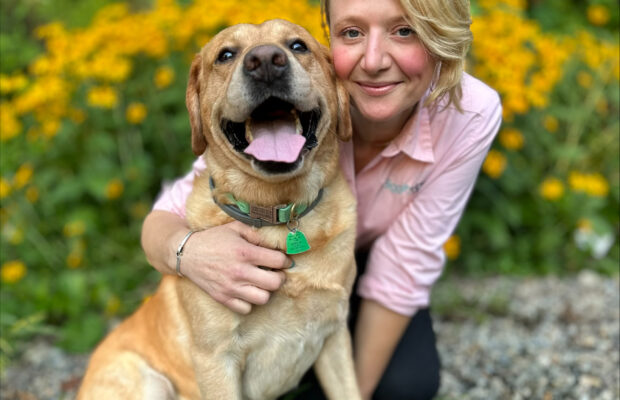
New WRSI Dog Pause Radio Episode Dropped!

Enjoy another episode of Dog Pause on WRSI The River with WRSI DJ Emily Bourque and dog expert Sarah Meikle, founder and Executive Director of Diggity Dogs Service Dogs!


DOG PAUSE on WRSI: Why do dogs eat grass?
Why do dogs eat grass?
Find out why dogs eat grass in the first episode of Dog Pause on WRSI The River!

Book Review: Dog Master
Dogeared
Reviews of books about dogs by Sarah Meikle
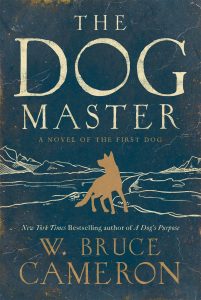
The Dog Master: A Novel of the First Dog
By W. Bruce Cameron
Bruce Cameron’s The Dog Master: A Novel of the First Dog is set in an unfamiliar environment and time in the Paleolithic Period at the dawn of the last ice age. The cast of characters includes multiple tribes of primitive homo sapiens, modern men, and a handful of Neanderthals.
At the time, humans were both predator and prey, residing in a richly diverse but rapidly transforming landscape full of formidable carnivores such as lions and giant hyenas.
Neanderthals had been widely successful long before modern man entered the fray. They were larger, stronger and even, with their larger brains, possibly smarter than their homo sapien relatives, yet they would not survive the next ice age. They would, like so many animals that have walked the earth, become extinct.
These modern men, our ancestors, could have so easily met the same fate, yet, according to Cameron and other modern scholars, an unlikely alliance contributed to our survival: the alliance between Man and Wolf.
But how exactly did this come to be? What would turn wolves, stealthy and capable hunters that likely saw us as a food source at one time, into man’s best friend? That is the question that prompted the author to pen The Dog Master: A Novel of the First Dog, a captivating and rich narrative of the first human-canine alliance.
Unlike the ‘survival of the friendliest’ narrative supported by many much loved texts (including some that have been reviewed in this column over the years, such as Brian & Vanessa Hare’s The Genius of Dogs), Cameron’s book proposes an alternative evolution: a sudden evolution caused by a rare set of circumstances causing two species to need one another in a way their species otherwise wouldn’t have.
This theory of a more sudden evolution, an “evolutionary shortcut” from wolf to dog, is both compelling and well-reasoned. Cameron’s relatable storyline makes is all feasible, even likely. He creates a tapestry of small tribal cultures, peppered with origin stories of other human customs (from nail polish to hairstyles) that seem familiar, recognizable.
Yet, it is the discussion of the implication of this unlikely alliance on the human psyche that Cameron explores that is even more exciting. Cameron proposes that this first improbable relationship went on to influence our entire perspective of the animal kingdom.
As Penn State anthropologist Professor Pat Shippman puts it, “No other mammal routinely adopts other species in the wild — no gazelles take in baby cheetahs, no mountain lions raise baby deer…. Every mouthful you feed to another species is one that your own children do not eat. On the face of it, caring for another species is maladaptive, so why do we humans do this?”
Cameron answers this question abruptly: it was chance that led to this occurrence and its profound advantages that led to its continued and widespread practice among humans through the ages.
Though the structure of The Dog Master: A Novel of the First Dog can, at times, feel awkwardly and needlessly fragmented, it is, overall, a wonderful and worthwhile read that will leave you sad to turn the last page and daydreaming about it’s premise long after reading.
W. Bruce Cameron is the New York Times bestselling author of 8 Simple Rules for Dating My Teenage Daughter, The Dog Master, and the A Dog’s Purpose series. In 2011 he was named Columnist of the Year by the National Society of Newspaper Columnists. He lives in California. (Bio courtesy of Amazon.com)
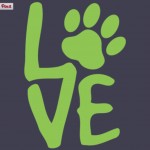
Support us in style w/your new favorite sweatshirt or t-shirt!
Support us in style!
Buy your new favorite hoodie or t-shirt!
Check out our new dog lovers’ sweatshirts and t-shirts!
They make the perfect treat for yourself or gift for someone you love! Support us in style from now until December 25th! Get yours now!

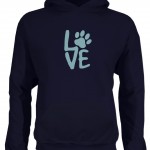

T-shirts: http://booster.com/diggitydogst
Navy & blue sweatshirts: http://booster.com/diggitydogshoodies
Blue & green sweatshirts: http://booster.com/diggitydogshoodie

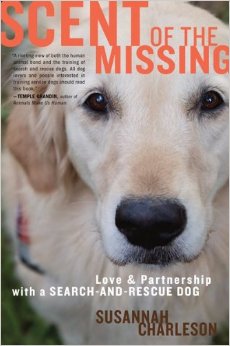
Book Review: Scent of the Missing
Book Review: Scent of the Missing by Susannah Charleson
Review by Sarah Meikle
I thought I would give readers a break from the books about service dogs this issue (lest I bore you with my personal penchant for the subject) and review one of the most emotive, well-written dog books I have ever read, Susannah Charleson’s Scent of the Missing.
I hesitate to call Charleson’s narrative a “dog book”, though it is very much that, as it seems an unsubstantial categorization, and oversimplification, of such a dynamic and expertly crafted book.
Scent of the Missing is the story of Charleson’s partnership with Puzzle, her Golden Retriever, and their experiences training as a search and rescue team. It is a stirring memoire composed of elegant, palpable prose that moved me to both laughter and tears. It is an adventure story full of suspense and an insightful celebration of a woman partnering with a dog to create a life that her dog will love, a life full of purpose, skill and accomplishment.
Charleson’s tale sits astride a tapestry of other stories, other people’s stories: stories of missing teenage girls, missing children, and missing elders. Each story of the missing person is stitched with the threads of information passed on to rescuers and searchers by officials and facts and rumors garnished from local onlookers and passersby. The multitudes of missing cause the mind to swim in the murky waters of tragedy, of violence and hardship.
Some are found by the dog-human teams scouring the wilderness and neighborhoods, and returned safely home with sighs of relief and celebratory calls. More often than not, however, the mysteries the teams unravel by chasing scent and paw through brush and bramble end in travesty, in sadness, in the discovery of a cadaver, although even those discoveries are also celebrations of sorts. They are, at least, answers. They are conclusions. They mark the transition from “is” to “was” in the descriptions of the missing. They also, in an uncomfortable irony, mark the success of the search and rescue teams.
As such, you might expect such a read to be a fascinating but overwhelmingly morbid journey. Yet, Scent of the Missing is surprisingly uplifting and sweet.
Charleson artfully weaves her personal journey of growth and emotion through the magnanimous undertaking of training her dog Puzzle. She tenderly reveals the history that led her to seek out such lonesome work. Her sharing creates an intimacy that is relatable, though few have likely shared such experiences.
Charleson and Puzzle’s dedication, as well as the dedication of the other search and rescue human-dog teams they train and search with, is inspiring. It moves readers to pay homage to search and rescue teams everywhere.
Most will likely be surprised to learn that all search and rescue teams are volunteers. These hardworking, lifesaving teams, often heed the call to action across great distances, often even flying to locations at their own expense. They enthusiastically brave river crossings, snakes, prickers and formidable landscapes into the unknown. They tear themselves from the warmth of their beds in the middle of the night to don boots and suits made for hardship. They time themselves until their responses have them in their cars careening toward those in need in a handful of minutes.
The training the search and rescue teams undergo is equally awe-inspiring. They systematically stage scenarios that will present their dogs with the challenges they may encounter on future searches. They take turns being the “cadaver” waiting to be found, often crammed into uncomfortable, dirty, creepy places while they wait in the hopes of being found. They learn to distinguish between the smells of dead animals and humans. They resign themselves to pausing their searches as the light of day fades only to wrack their brains all night reliving the search of the day to ensure they handled the burden of their responsibility effectively.
You may be wondering where in this the laughter is found. I can only assure you it is there. It is in the minutia of every description of Charleson’s actions and feelings and the exploits of Puzzle as she learns.
Scent of the Missing is a page turner, a book that will keep you reading long after the time you intended to go to sleep; a book that beckons you to steal away a few more pages when you wake, though you know your morning schedule doesn’t allow for leisure reading time.
For those more partial to audiobooks, Scent of the Missing can also be found on Audible and it is brilliantly narrated by the author herself. Her dulcet tones of Charleson’s voice highlights her poetic, lush and lyrical writing style. Her timing is impeccable, perfectly digestible and impassioned, poignant, and weighted with emotion.
Whether you chose to hear it or read it, Scent of the Missing is a pure joy that you will be reluctant to finish. It is an adventure you won’t want to end; one you might not have expected to relish so much, considering the subject matter, but that you assuredly will. Enjoy.
© 2015 Sarah Meikle
Sarah Meikle is a life-long dog lover and the founder and executive director of Diggity Dogs Service Dogs in Shelburn Falls, MA, a 501(c)3 non-profit organization that specializes in psychiatric and medical alert service dogs. Kiwi, her gorgeous rescue mutt, inspires her daily.

DOGEARED: Reviews of books about dogs by Sarah Meikle

Weekends with Daisy by Sharron Kahn Luttrell
Most mothers struggling to relate to their teenage daughter would not immediately think that fostering a service dog puppy would be the answer to their problems. Yet, for Sharron Kahn Luttrell, it was.
Having lost their family dog several years ago, Luttrell was suffering from ‘doggie deficit disorder’, but was reluctant to commit to another dog on her own as her two teenagers were about to graduate from high school and ‘leave the nest’. Unsure that she would want all of the responsibilities of a dog that might live for ten to fifteen years would entail, Luttrell decided to become a weekend foster for a N.E.A.D.S. (National Education for Assistance Dogs Services) service dog in training. Enter Daisy, a yellow lab with an infectious smile and goofy disposition, a little ray of sunshine, a bundle of joy.
Luttrell’s memoir Weekends with Daisy documents her experience as a weekend foster for a Daisy, who is raised and trained by an inmate, Keith, in a nearby prison during the week. Through this unlikely partnership between a stay at home mother of two and a convicted felon serving a decades-long sentence, Luttrell explores the nature of compassion, redemption, forgiveness, and kindness with refreshing candor and a healthy dose of self-deprecating humor.
Weekends with Daisy is a story about the transformative role dogs play in our lives and a testament to the simple power of sloppy kisses and furry affection. It is the tale of how the love of a pup can break through carefully constructed defense mechanisms and teach us about love, loss and patience.
As the Executive Director of a local service dog organization, Diggity Dogs Service Dogs, I am fortunate enough to see such transformations occur often. Of course, our dogs create such change in the lives of our clients, which is to be expected. However, they also do so for our foster volunteers.
Just last week, I sat watching six dogs frolicking in the grass with one of our fosters, a woman I have known for roughly six months when she began to tell me how much she has learned from the service dog in training that she has been fostering for even less time than that.
I was not surprised by her words, as the transformation in her seemed obvious to me. There was a light-hearted calmness to her that was not there when we first met. She seemed, quite simply, at ease.
I first met this foster when she attended an orientation event our Shelburne Falls training center. (All of Diggity Dogs’ service dogs in training are fostered by local volunteers while being training and anyone interested in fostering one of them must first participate in a three to four hour orientation before they are eligible to be matched with one of our dogs.) It is remarkable that she was there at all, really, as she had spent most of her life terrified of dogs.
However, as she began to work less, now partially retired, she had a strong desire to give back, to help others in some way. After reading an article about our organization she decided that she wanted to do that by volunteering for our growing local non-profit. And so, despite her fears, she applied to our foster program.
Since then, she served as a loving relief (temporary) foster for several of our dogs in training, before finally agreeing to foster one of our “wonderful washouts”, a dog that will not be graduating as a service dog (primarily because of her very high prey drive and attraction to everything that moves.) Amazingly, it was this dog – a dog that required far more patience and effort than any of our other dogs in training – which she credits for teaching her the most.
As we sat on her porch watching the dogs in fading daylight, she explained how the patience and compassion that the experience has instilled in her has had a positive affect on her family too. It has spilled over into her marriage and her relationships with her children and grandchildren.
Her words fill me with joy, as I had suspected that being a foster volunteer for our program had been instrumental in creating the changes I have seen in her. To me, she has become someone who can happily roll with whatever life serves up. She is quick to laugh and seems less anxious, less fearful; more confident. She seems to be enjoying life more, having more fun. Not because she is doing things that are more fun, but because her perspective has shifted. It is subtle but marked difference from the woman I met in late 2014.
I am moved by her sentiments and we watch in wonder as the pups gallop across the lawn.
As we do so, I wonder whether Luttrell’s experiences led to her fostering again or to get a dog of her own. Once home, I Google her name and quickly find her website where I am delighted to discover that she has continued to foster for N.E.A.D.S.. Luttrell has, in fact, fostered a total of ten dogs, five of whom graduated and five she dubs “fabulous flunkies”.
Unfortunately, not all dogs trained in service dog organizations will go on to make great service dogs. It is the frustrating reality of the industry. However, I love knowing that Luttrell’s passion for fostering has obviously not been dampened by this fact, just as I love the fact that our fosters regularly ask for another foster dog once the one they have had with them for the last six to twelve months graduates. Yes, there is usually an adjustment period, as they learn to love their new four-legged friend. They always differ in some ways from the pup they just reluctantly said goodbye to, but they are inevitably won over again by each new dog, as their differences bring new joys, new laughter, new insights into the world and themselves.
My foster’s experiences, and the experiences of the characters in Weekends with Daisy, remind me that life’s biggest lessons often come from surprising sources and that, sometimes, it is when you set out to teach that you actually learn the most.
Check out our new informative video!
Check out our new, informative video to help people understand what we do!
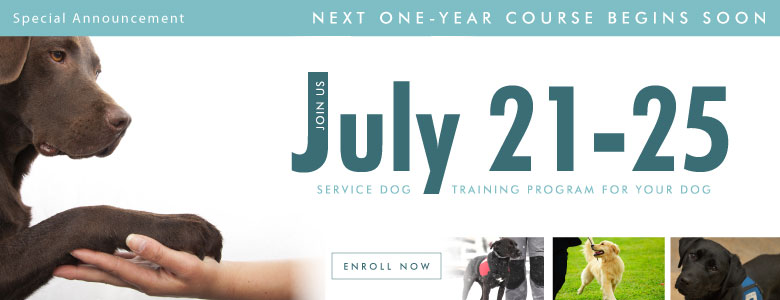
Next Intensive Training Course begins July 21, 2014!
Our next course for individuals wanting to train their dog to be a service dog is starting soon! Click here for more info! Register now to save your spot, as class sizes are limited!

Deduct the Cost of your Service Dog from your Taxes
Great news!
When doing your taxes, you can include the costs of buying, training, and maintaining a guide dog or other service animal in your medical expenses. In general, this includes any costs, such as food, grooming, and veterinary care, incurred in maintaining the health and vitality of the service animal so that it may perform its duties.
For more information download this PDF from the IRS website.
